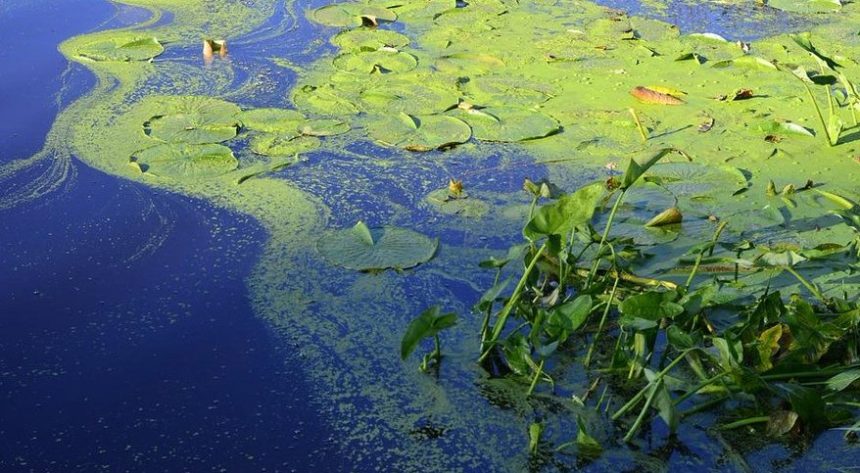Blue-Green Algae Returns Amid Summer Heat, GRCA Issues Caution
It’s back. With soaring summer temperatures across Ontario, blue-green algae have reappeared in local reservoirs, prompting health and environmental warnings.
The Grand River Conservation Authority (GRCA) confirmed sightings of the harmful algae near the west side of the Shand Dam at Belwood Lake reservoir. And that’s not the only place.
Historically, the algae has also bloomed at Conestogo Lake, Guelph Lake, Woolwich reservoirs, and Snyder’s Flats.
The GRCA describes the telltale signs clearly: “a noticeable green or brown scum will form on the surface of water bodies and the water look like green or bluish-green pea soup.” It gets worse.
“Once blue-green algae are in full bloom, it may look like spilled ‘paint’ along the shoreline. A new blue-green algal bloom often smells like fresh cut grass, while an older bloom can smell like rotting garbage.”
Not exactly the kind of summer fragrance people are after.
This algae thrives in warm waters rich with nutrients, particularly runoff from agricultural fields and fertilised lawns after rainfall. That runoff feeds the bloom, creating unsafe conditions for locals and tourists alike.
Authorities are urging residents to stay clear. Don’t touch it. Don’t swim in it. And don’t eat the fish from affected waters.
According to Wellington-Dufferin-Guelph Public Health, “there’s no way to tell by looking at a bloom whether it contains toxins or not. As a precaution, regard any blue-green algal bloom as potentially toxic.”
Health risks range from mild to severe. Contact can lead to rashes, irritated eyes, nausea, fever, or even diarrhoea. Ingesting large quantities? That could mean serious liver issues.
Children under six are especially vulnerable. If you’ve been exposed, rinse off right away with clean water. Watch closely for any symptoms and consult a healthcare provider if needed.
Spotted a bloom but can’t see a warning sign? The GRCA urges the public to report it immediately. Contact either their office or the Ministry of Environment, Conservation and Parks’ spill action centre.
Blue-green algae might look harmless or even scenic. But don’t be fooled—it’s not just unpleasant, it’s dangerous.
With heat waves becoming more common, blooms like this are expected to increase.






